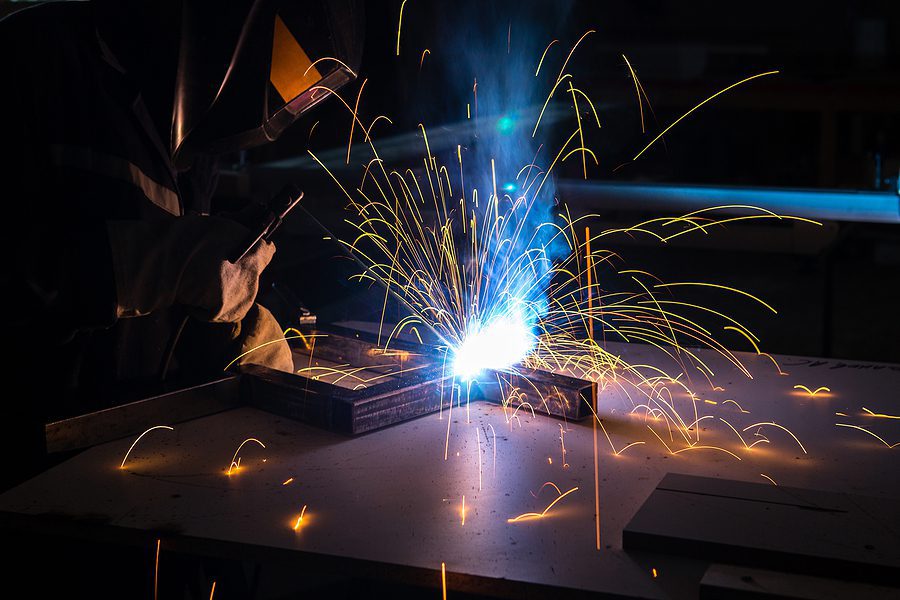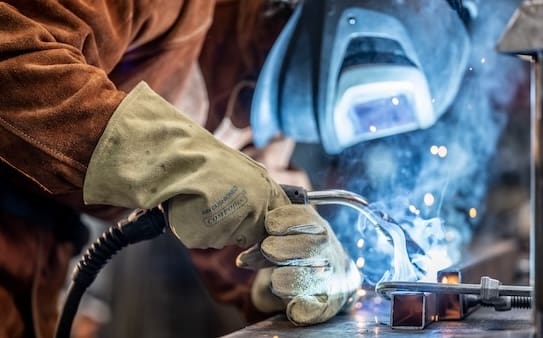Avoid welding failures with advice from Montana Mobile Welding and Repair Belgrade Fabrication
All About Welding: Key Insights Into Techniques and Finest Practices for Success
Welding encompasses a variety of techniques, each suited for particular materials and applications. Recognizing these techniques, such as GMAW, SMAW, and TIG, is crucial for achieving ideal outcomes. The appropriate equipment and safety methods can not be overlooked. As preparation and troubleshooting play vital roles in the welding process, mastering these components can considerably boost the high quality of the end product. What are the vital aspects that guarantee a successful weld?
Comprehending Different Welding Methods
Welding techniques encompass a variety of approaches, each matched to details applications and products. Amongst the most typical techniques are Gas Metal Arc Welding (GMAW), Protected Steel Arc Welding (SMAW), and Tungsten Inert Gas Welding (TIG) GMAW, also called MIG welding, is preferred for its speed and convenience, making it ideal for thin products. SMAW, or stick welding, is favored for its simplicity and effectiveness in outside settings, especially with thicker metals. TIG welding provides accuracy and control, making it appropriate for complex job and non-ferrous steels (Montana Mobile Welding and Repair). Each technique has its one-of-a-kind benefits and considerations, enabling welders to choose the most effective approach based upon the task's demands, material type, and desired outcomes. Understanding these methods is necessary for successful welding
Crucial Welding Equipment and Tools
While different welding techniques call for specific skills, the best equipment and devices are just as important for attaining top quality results. Necessary welding devices consists of welding devices, which differ depending upon the strategy-- such as MIG, TIG, or stick welding. Safety equipment, including headgears, aprons, and gloves, assurances safety and comfort during the procedure. Additionally, components and clamps help protect materials in position, guaranteeing accuracy in welds. Consumables like welding rods, cable, and securing gas are also important elements that affect the high quality of the weld. Furthermore, devices such as grinders and cutters assist in surface prep work and post-weld completing, adding to an expert result. Purchasing high-grade tools ultimately boosts the performance and efficiency of welding projects.
Safety And Security Practices in Welding
Appropriate safety practices are crucial in the welding sector to secure employees from possible risks. Welders have to wear ideal personal safety equipment (PPE), consisting of safety helmets with appropriate shading, handwear covers, and flame-resistant garments. Adequate air flow is important to minimize direct exposure to harmful fumes and gases produced during the welding procedure. Furthermore, workers must be educated in the correct handling of welding devices to stop crashes. Fire precaution, such as maintaining flammable materials away from the welding location and having fire extinguishers readily available, are essential. Routine evaluations of tools and work spaces can aid determine possible hazards before they bring about accidents. By sticking to these safety and security methods, welders can develop a safer working atmosphere and minimize dangers connected with their trade.
Readying Materials for Welding
Preparing products for welding is a vital step that substantially affects the quality and stability of the final product (Belgrade). Correct preparation includes cleaning the surface areas to get rid of contaminants such as corrosion, oil, and dust, which can jeopardize the weld. Techniques such as grinding, sanding, or making use of solvents are commonly used to achieve a clean surface area. In addition, making certain that the products mesh comfortably is important; spaces can result in weak welds. It's additionally vital to consider the positioning and positioning of the elements, as this will certainly impact the convenience of welding and the last end result. Ultimately, picking the suitable filler product and guaranteeing compatibility with the base steels is important for attaining strong, sturdy welds
Tips for Getting High-Quality Welds
Attaining high-grade welds needs attention to information and adherence to finest methods throughout the welding procedure. Proper joint preparation is crucial, guaranteeing surfaces are cost-free and tidy from contaminants. Choosing the ideal filler product and welding method based on the base steels is vital for suitable bonding. Preserving constant traveling speed and angle while welding can promote and protect against defects uniformity. Additionally, regulating warmth input is crucial; too much heat can lead to bending and compromised joints. If needed, consistently examining the welds during the process permits for instant changes. Ultimately, employing appropriate post-weld therapies, such as cleaning and tension relief, can boost the sturdiness and stability of the weld, ultimately guaranteeing an effective end result.
Troubleshooting Common Welding Issues
Welding frequently presents difficulties that can influence the top quality and honesty of the last item. Usual problems such as porosity, irregular weld beads, and overheating can emerge, each requiring particular troubleshooting strategies. Understanding these issues is essential for welders to boost their abilities and achieve perfect results.
Porosity Issues Described
Porosity can usually be ignored, it remains a vital concern in welding that can endanger the stability of a completed product. Porosity describes the visibility of little gas pockets within the weld grain, which can lead and compromise the joint to premature failing. This trouble usually occurs from pollutants, moisture, or incorrect protecting gas coverage during the welding procedure. To minimize porosity, welders ought to validate that the base materials are completely dry and clean, use ideal protecting gases, and keep constant welding specifications. Routinely evaluating the devices and atmosphere can also aid determine possible issues prior to they manifest in the weld. Addressing porosity properly is crucial for achieving strong, long lasting welds that fulfill top quality criteria.

Inconsistent Weld Beads
Inconsistent weld grains can considerably impact the high quality and stamina of an ended up item. Numerous elements add to this problem, consisting of inappropriate traveling speed, incorrect amperage settings, and irregular electrode angles. When the welder moves as well quickly, a bead may show up narrow and lack infiltration, while moving as well gradually can try this out cause excessive accumulation. Additionally, making use of the wrong amperage can result in either undercutting or excessive spatter, both of which concession weld honesty. The welder's strategy, such as irregular lantern activity, can additionally result in uneven bead look. To minimize these troubles, welders must concentrate on keeping stable, controlled motions and ensuring proper equipment setups to accomplish harmony in their welds. Consistency is key to accomplishing solid and dependable welds.
Overheating and Bending Issues
Extreme warm throughout the welding procedure can lead to considerable overheating and buckling issues, affecting the architectural stability of the workpiece. These troubles typically materialize as distortion, which can jeopardize positioning and fit-up, making further assembly challenging. Factors adding to overheating include the option of welding criteria, such as voltage and take a trip speed, in addition to the kind of material being bonded. To minimize these concerns, welders must maintain consistent travel rate and appropriate warm input while keeping track of the workpiece temperature. Additionally, preheating or post-weld warmth therapy can assist minimize anxieties triggered by rapid air conditioning - Montana Mobile Welding and Repair. Routine evaluation and adherence to finest practices are crucial in avoiding getting too hot and ensuring the long life and dependability of bonded frameworks
Often Asked Questions
What Are the Profession Opportunities in the Welding Sector?
The welding market provides more tips here diverse occupation opportunities, consisting of placements as welders, engineers, examiners, and instructors. Experts can operate in manufacturing, building and construction, aerospace, and auto sectors, taking advantage of strong demand and competitive wages in numerous functions.
Exactly How Can I Enhance My Welding Rate Without Compromising High Quality?
To enhance welding rate without sacrificing high quality, one ought to practice effective methods, maintain devices, maximize setups, and enhance hand-eye sychronisation. Routine training and seeking responses can also considerably add to attaining much faster, high-grade welds.
What Accreditations Are Available for Welders?
Various certifications exist for welders, consisting of those from the American Welding Culture (AWS), the National Center for Building Education And Learning and Research Study (NCCER), and different industry-specific organizations. These credentials improve employability and demonstrate skill proficiency.
Just How Does Welding Influence the Qualities of Metals?
Welding affects the residential properties of metals by changing their microstructure, which can result in adjustments in firmness, ductility, and toughness. Heat input and air conditioning prices during the procedure substantially influence these product attributes.
Can I Weld Dissimilar Metals Together?
